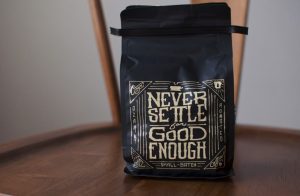Hot foil stamping has a long history. Patents date back to the start of the 19th century. It is a process that transfers a neutral or metallic foil to a flat exterior. This is due to the combined action of heat and pressure. It can improve your labels by offering sophisticated effects. So, if you are considering giving yours an extra touch, it will definitely help. Just make sure you choose high quality foiling services to get the best results.
Another method people use to improve labels is screen printing. This is also a very old technique, as it was utilised by Phoenicians and Japanese artists. Screen printing is realised by using a silk screen and stretching it over a frame. You then treat it so the ink is only able to pass through areas where you want to reproduce the image to print. Every colour corresponds to a separate frame.
Using both methods can make your labels distinct. Let’s look at the two in more detail so you can see the differences and other key factors.
Hot foil’s ins and outs
 With hot foil, it enables the creation of precise, sparkling details. It enhances colour in a charming manner. Also, you are free to use a wide array of finishes and colours. Since it utilises universal colours, hot stamping makes it possible to use the same shades on the label as other packaging elements.
With hot foil, it enables the creation of precise, sparkling details. It enhances colour in a charming manner. Also, you are free to use a wide array of finishes and colours. Since it utilises universal colours, hot stamping makes it possible to use the same shades on the label as other packaging elements.
What you need to do here though is pay special attention to readability. The foil can make it tricky to read the text if the font is small or has fine details. Thus, it is preferable to apply it to non-textural objects such as logos. Or, you can put your foil on short texts with simple fonts.
Like screen printing, it is not possible with hot foil to create details and colour shades that are too small. Its use isn’t recommended on variable elements either, as costs would be higher. Contact us if you desire top tier foiling services.
Screen printing’s pros and cons
This method makes it possible to apply thick varnish layers. They ensure high coverage even with shades like white. Moreover, varnish lucidity and thickness generate a lens effect that augments underlying colours. For this reason, the technique works to produce 3D and glossy effects. Thus, it emphases label elements like the brand logo.
If you are looking at screen printing, you have to consider that it is preferable to avoid 3D effects on details that are both too wide and too small. It is tricky to reproduce small details on the frame while wide areas can make labelling difficult. Due to this, you should not create varnishing that is overly thick.
Lastly, screen printing can’t reproduce colour shades. Also, it is not recommended for elements that could differ from order to order; you’d need to produce a new frame each time. As a result, it would increase the costs.
Conclusion
To conclude, there are times to use screen printing and foiling services. The first is recommended for anyone after minimal and modern effects. You can use it on innovative goods for young target audiences. The same goes for premium items where you want a less is more approach.
For hot stamping, due to the wide range of finishes and colours, you can get vastly different results. Using foils such as ductal, matte gold, or copper allows you to gain vintage and classic effects. The technique is ideal for traditional products like food preservers and fine wines. You can use it on cosmetics with a retro taste too. By using foils like metal grey or matte silver, the final effect can be glamorous and modern. Or you can choose all manner of other colours.
We know our foils and deliver unbeatable foiling services
At Foiling Services, we know our work can deliver stunning results that enhance the appearance of different items. Something else our team knows is that working with foil can be tricky. It is easy to ruin an item or waste resources if you’re not careful. Luckily, you can rely on us to deliver the results you are after.
So, if we can aid you in any way with our foiling services, let us know. We can provide solutions for various labels, packaging, and much more. This can even include adding foil to things like automotive parts.
